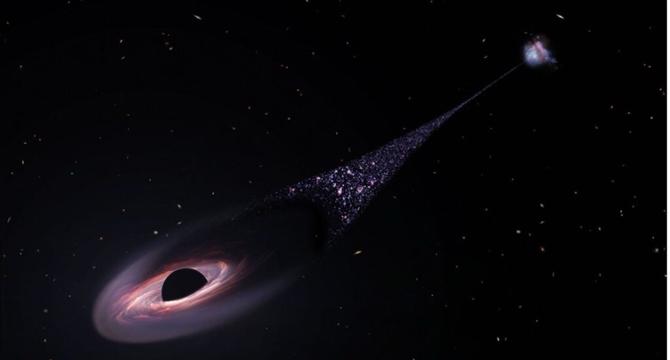Armaghplanet
3w
153

Image Credit: Armaghplanet
Celebrating Black Hole Week with a Spotlight on a Research Paper
- Astronomers from Yale University discovered an unusual straight line next to a galaxy over 10 billion light years away during observations from the Hubble Space Telescope.
- The thin line pointed directly at the center of a nearby dwarf galaxy, almost half as bright as its neighbor, and was found to be some 200 thousand light years long.
- Further examination revealed that the dwarf galaxy had merged with another galaxy about 100 million years ago, resulting in higher star formation rates and other unique qualities.
- When galaxies merge, the black holes at their centers also interact, potentially leading to the expulsion of a black hole, which could explain the observed bizarre line in the observations.
- The observed feature was interpreted as a black hole being ejected from the galaxy, travelling through space at an incredibly high speed and causing stars to form in its wake.
- This phenomenon, termed a runaway black hole, is a rare and fascinating event, with the ejected black hole being 40 times larger than the Sun and moving at 16,000 kilometers per second.
- The discovery was described as a serendipitous find by lead researcher Pieter van Dokkum and showcases the exciting and unexpected phenomena that can be observed in the universe.
- Advancements in technology and telescopes offer promise for uncovering more wondrous astronomical events in the future, pushing the boundaries of our understanding of the cosmos.
- This discovery adds to the collection of extraordinary astronomical phenomena, with the potential for more such discoveries on the horizon as our observational tools improve.
Read Full Article
9 Likes
For uninterrupted reading, download the app